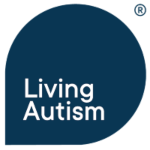The article below adresses the issues of autism and sleep in children and offers ten possible strategies.
You know that your child with an Autism Spectrum Disorder (ASD) experiences sleep difficulties. You also know that your child’s difficulties create sleep challenges for you too. But what you may not know is how common the challenges you face are for families affected by ASD.
In a report published in 1999, psychologist Amanda Richdale estimated that 44-83% of children on the autism spectrum experience sleep challenges, the most common of which are difficulty falling asleep, frequent wakings during the night, and early morning waking. Other difficulties include:
- Insomnia
- Sleep apnea
- Bedtime resistance
- Parasomnias, such as sleepwalking, restless leg syndrome, nightmares, and night terrors
Sound familiar?

The good news is that the struggles you have getting your child to fall asleep and stay asleep are not unique to your family. In fact, the prevalence of sleep difficulties among children with autism means there has been ample opportunity for researchers to study the causes of the problem and develop effective strategies to help children and their parents get the sleep they need.
10 ways you can help your child with ASD sleep better
While these aren’t 100% effective all the time, practicing these habits may help improve your nighttime (and early morning) struggles.
1. Eliminate household noises
Most typically developing (TD) kids can easily block out ambient noise, especially when they are tired. For kids on the spectrum, household noises like the TV, music, the dishwasher, etc. can be over-stimulating or otherwise disturbing, making it impossible for them to fall asleep or even feel tired. As much as possible, try to limit your child’s exposure to household noises once they have gone to bed.
2. Reduce light exposure in the bedroom
Visual stimuli can disturb your child and make it difficult to fall asleep. Keeping their bedroom dark will help limit visual stimulation and encourage the production of melatonin, a neurohormone that promotes sleep. Switch to black-out curtains if there are streetlights, traffic lights, or other outdoor light sources near your child’s bedroom windows.
3. Keep the bedroom cool
Your child may not be able to tell you if they feel too cool or too warm, but sleep experts indicate that a cool bedroom promotes sound sleep. Optimal bedroom temperatures range from 65° – 67° F. If your child cannot tolerate bed clothes or covers, you will want to raise the heat a bit but no higher than around 75° F.
4. Assess fabrics on pajamas and bedding
Many children with ASD find certain fabrics and clothing features to be extremely irritating. Make sure that your child’s PJs and bed linens are made of fabrics that at least do not cause discomfort and at best are soothing to your child. Be aware that seams, zippers, and buttons can also be irritating. If your child is non-verbal, you may need to do some investigative research with them using trial and error.
5. Establish a bedtime routine and create visual cues
Work with your child to develop a soothing bedtime routine that you can stick to every night. Keep it simple, calming, and free from electronic screens. Create visual support for your child’s bedtime routine. (For more information about visual tools for children with autism and examples, see The National Autistic Society.) A bedtime routine might look like this:
- Take a bath
- Put on pajamas
- Use the bathroom
- Wash hands
- Brush teeth
- Read a book
- Go to sleep
6. Use a bedtime social story
Create a social story explaining the importance of sleep and the cues people use to know when it’s time for sleep. Be sure to include pictures to support your story.
7. Try a weighted blanket
While a recent study suggests that weighted blankets do not increase sleep time or decrease time spent falling asleep, the deep pressure touch provided by the weighted blanket can help to soothe your child and make the bedtime routine more appealing.
8. Use relaxation training
If you suspect anxiety is the cause of your child’s sleep difficulties, incorporate some relaxation activities into the bedtime routine. These include:
- Deep breathing
- Muscle relaxation techniques
- Warm bath
- Soft music
- Audiobooks/stories
9. Consider melatonin therapy
Research has shown that children with ASD improved their sleep when given melatonin in combination with oral instructions for parents on strategies to promote sleep. Look for a new melatonin mini-pill to be available in Europe in October 2018 and in the U.S. after that. It is a slow-release pill that is easy for kids to swallow and has been shown to decrease the time spent falling asleep as well increase total sleep time.
10. Teach your child to sleep alone
Many parents of children with autism fall into the habit of lying down with their kids to get them to sleep. While this can be a precious time to connect with your child, it reinforces their perceived need to have you near them in order to sleep. That means you are indispensable at bedtime as well as when your child awakens in the middle of the night. And that’s not good for either of you.
Tips for children who can’t go back to sleep on their own
Everyone naturally wakes up several times a night. For most people, these wakings go unnoticed because we go back to sleep right way.
For children who cannot go back to sleep by themselves, these natural wakings can wreak havoc on their night’s sleep and yours. That’s why it’s important for your child to learn to fall asleep alone at bedtime as well as during the night.
Training your child to fall asleep alone should be done gradually over the course of a few weeks. Gradually distance yourself from your child once they have gotten into bed, then keep your visits back to their room brief. Gradually decrease the amount of attention you direct toward your child such as talking, eye contact, facial expressions, etc. while you are increasing your distance away from them.
SAMPLE DISTANCING SCHEDULE
| Nights 1, 2, and 3 | Nights 4, 5, and 6 | Nights 7, 8, and 9 | Nights 10, 11, and 12 |
| Sit on the bed with your child as they lie down for sleep. Read them a soothing, short story. | Sit on a chair beside the bed. Keep an eye on them but make a game out of both of you staying quiet. | Move your chair further from the bed as your child tries to sleep. Try to make no contact with your child. | Wait outside your child’s bedroom after tucking them in and see if they can fall asleep alone. If not, go back into their room briefly, just long enough to remind them that it’s time for sleep, they are OK, and wish them “good night.” |
If you need to return to their room because they still haven’t fallen asleep, wait a little longer each time and keep your visits brief and uneventful. You can use this same method for middle-of-the-night wakings.
ASD teens and sleep

The teen years are a time of enormous physical, intellectual, and emotional change. These changes can disrupt sleep even if your child has been a good sleeper in the past. Alternatively, if you have tried some of these strategies in the past with no effect, it is worth trying them again with your teenage child.
Keep in mind that all teenagers experience a shift in their sleep and wake rhythms when they hit puberty. The time that they become sleepy gets later and their wake time is also pushed back. This shift often conflicts with school and work schedules. If there is flexibility in your teen’s schedule, help them shift to a later bedtime gradually by pushing bedtime back 30 minutes every few days.
Allow them to sleep a little later as their schedule allows. Just make sure they have the recommended nine hours devoted to sleep each night. And reward them for sticking to their weekday sleep and wake schedule on the weekends.
Causes of sleep challenges for children with ASD
Researchers do not agree on why sleep challenges are so prevalent among children with autism. But there are several theories circulating in the autism research community that can lead to better therapies or treatments.
- Missed signals. Children with ASD may find it difficult to learn normal sleep associations (such as bedtime routines that signal time for sleep).
- Adjusting to changes. Children with autism usually have a hard time adjusting to changes in routine or environment. Trips to Grandma’s or family vacations can wreak havoc on their sleep schedules. Adjusting to Daylight Saving Time and then back to Standard Time presents another challenge.
- Circadian rhythm sleep disorders. Children with ASD may not respond to the social cues that help to regulate the circadian rhythms in TD children and adults such as mealtimes, bath times, dressing for bed, brushing teeth, etc. A study conducted by a team of researchers in Japan, found that people with autism are about twice as likely to carry mutations in the genes that regulate the body’s sleep/wake cycle or circadian rhythms, which may be one reason so many children with ASD experience sleep difficulties.
- Anxiety is a common problem for children with autism and may lead to insomnia and other sleep difficulties.
- Medical issues. Sleep apnea, epilepsy, and acid reflux are more common in children with ASD and can disrupt sleep.
- Lower levels of melatonin. Children with autism have been shown to produce lower levels of melatonin, a neurohormone that regulates the sleep/wake cycle. In a study conducted at Vanderbilt University, children on the autism spectrum with lower melatonin levels were found to spend less time in deep sleep stages and exhibited more daytime sleepiness.
You and your child don’t have to live this way
You and your child already deal with so many challenges resulting from ASD that you may think sleep deprivation is just another one on a long list. But your child’s sleep difficulties should not be ignored because they can have serious consequences for your child as well as the entire family.
- Poor sleep exacerbates some of the classic difficulties for children with autism such as weak emotional control, repetitive behaviors, difficulty with social situations and communication, and attention deficits.
- Recent studies indicate that children with ASD may get less rapid eye movement (REM) sleep than their neurotypical peers. This deficit can have significant consequences for their intellectual development since memory and learning is solidified during this phase of sleep. REM sleep is also the time when brains process fear and emotions. Insufficient REM sleep can lead to increased anxiety and stress.
- The nightly struggle to get your child to bed and to fall asleep makes bedtime stressful for everyone in the family. If you have more than one child, you may have less time and energy to attend to your other children because you are consumed by the needs of your child with ASD.
- Your evenings turn into a race against the clock to get your child to sleep. Disruptions during the night may interfere with your time with your spouse. The chronic lack of sleep can make you less of the kind of parent and spouse you’d like to be.
That’s why it’s important to take steps to help your child sleep as soon as it becomes a problem.
HOW MUCH SLEEP DO KIDS NEED?
| Age | Recommended Sleep Duration | Not Recommended |
| Toddlers (1-2 years) | 11 to 14 hours | Less than 9 hours; More than 16 hours |
| Preschoolers (3-5 years) | 10 to 13 hours | Less than 8 hours; More than 14 hours |
| School-aged children (6-13 years) | 9 to 11 hours | Less than 7 hours; More than 12 hours |
| Teenagers (14-17 years) | 8 to 10 hours | Less than 7 hours; More than 11 hours |
| Young adults (18-25 years) | 7 to 9 hours | Less than 6 hours; More than 11 hours |
Recommendations courtesy of the National Sleep Foundation
This article has been kindly donated by Mattress Advisor. Click the logo below to go to the website.
You can find the original article at
https://www.mattressadvisor.com/autism-and-sleep/
_____________________________________________________________________




